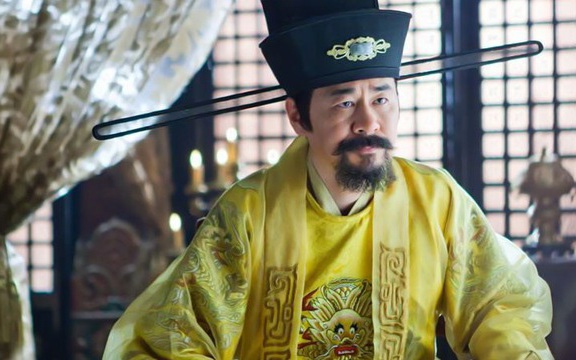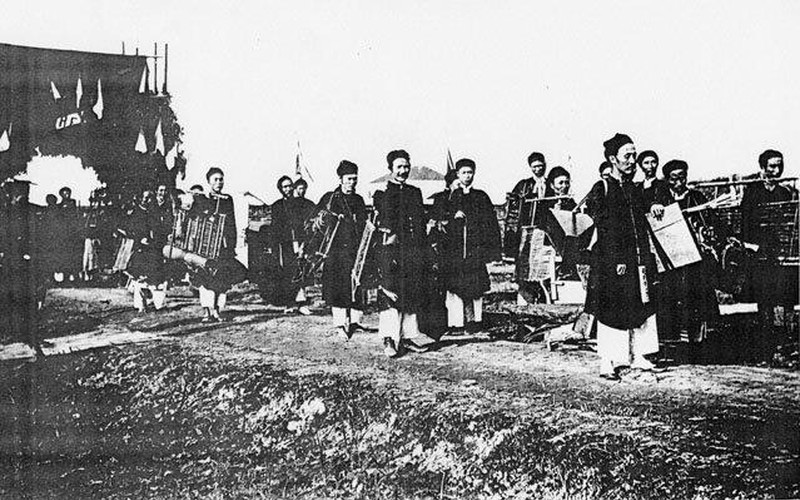The “poison” substance leads to the tomb?
Teotihuacan is located about 50 km northeast of Mexico City, belonging to the Maya civilization. This ancient city once flourished from 100 BC to 750 AD.
The name Teotihuacan later comes from the Aztecs. According to the Aztecs, Teotihuacan was understood as ‘the place where the gods were born’. The city was therefore certainly larger in size than all the other places in the Americas at the time. However, unfortunately not much is known about the inhabitants of this city.
Teotihuacan is the most mysterious ancient city of the Americas, has long been a place that attracts many archaeologists and researchers. It is considered one of the most influential urban centers in ancient America. An estimated 200,000 people once lived in this mysterious metropolis.
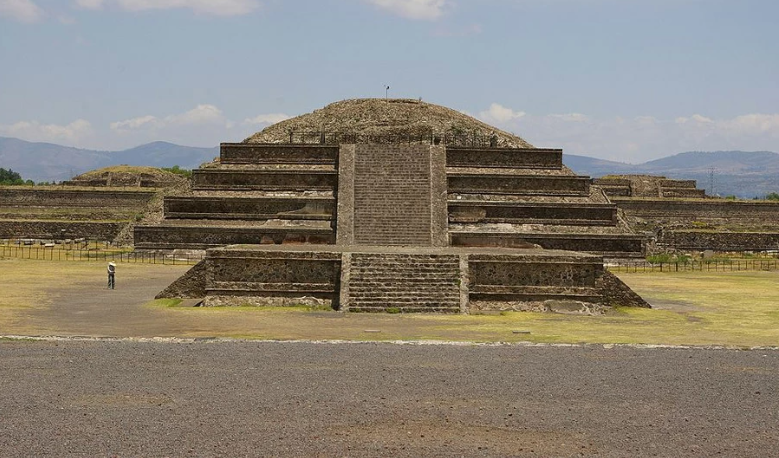
Pyramid of Quetzalcoatl, Temple of the Serpent in Teotihuacan.
There are 3 mysterious pyramids linked to a place called ‘Avenue of Death’ with a length of 2.4 km, including the pyramid of the Sun, the Moon and finally Quetzalcoatl, the temple dedicated to the Snake god , in the form of a pyramid.
In 2003, two archaeologists from the National Institute of Anthropology and History of Mexico found a mysterious tunnel just below the structure of the pyramid of Quetzalcoatl.
When this mysterious tunnel was first discovered, archaeologists thought they would find a treasure filled with gold. However, instead, experts have unearthed many objects such as crocodile teeth, jewelry, seashells, the remains of a jaguar, a mask made of green jade …
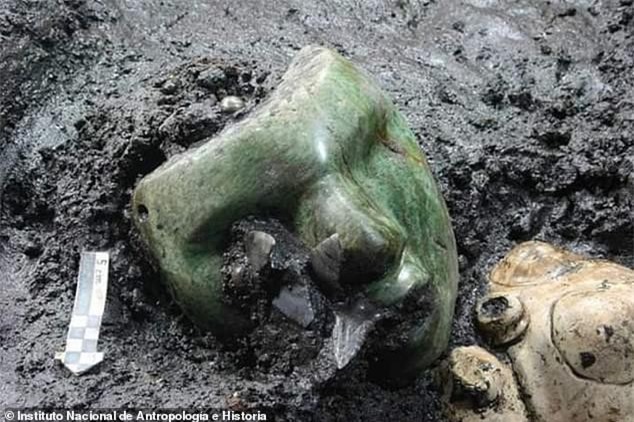
Blue jade mask found.
In particular, the researchers discovered pools of liquid mercury, traces of rising water levels, on the walls of the secret tunnel. In addition, the ceiling of the tunnel also had traces of glowing metal powder, which looked like stars shining brightly in the night sky.
Some archaeologists believe that underground tunnels containing mercury may depict a mystical river that leads to royal tombs. The remains of the powerful kings of Teotihuacan have not been found and could this river of mercury be the solution to the mystery?
Underground tunnels, 1,800 years of hidden secrets
The tunnel beneath the Serpent pyramid has remained undisturbed for about 1,800 years. This mysterious tunnel was first discovered by archaeologist Sergio Gómez Chávez after a heavy rain in 2003. Specifically, a few days after heavy rain, Sergio Gómez Chávez went to Teotihuacan and found a sinkhole about approx. 1 meter right at the foot of this temple.
Archaeologist Sergio Gómez shines a flashlight inside the tunnel. However, he could see nothing but darkness everywhere. Therefore, this archaeologist decided to go down the tunnel to find out what was inside. After using a rope tied around his waist, he was assisted by his colleagues to descend into the tunnel.
When he reached the middle of the tunnel, Gómez found that the passage was blocked by giant rocks. Before that, other archaeologists discovered a narrow tunnel under the pyramid of the Sun. Therefore, this archaeologist has hypothesized that what he found is a similar structure and that it is hidden just below the pyramid worshiping the sacred Snake god.

Remote control devices help archaeologists explore mysterious tunnels. Photo: INAH
After this time, archaeologist Sergio Gómez plans to excavate the secret tunnel and explore the site. With the help of Mexico’s National Institute of Anthropology and History, he was able to use ground-penetrating radar devices.
By early 2004, Sergio Gómez had assembled a team of 20 selected workers and archaeologists. His research team put together radar to scan the ground below the temple. By 2005, they had succeeded in completing the digital map.
The tunnel is about 100 meters long from the citadel and square surrounding the temple to the central area of the pyramid.
In 2009, after obtaining permission from the government, Sergio Gómez and his research team broke down the tunnel’s entrance, installing ladders to access the underground site. The initial excavation was carried out manually. A total of about 1,000 tons of soil has been extracted from the tunnel. After removing each segment, a 3D scanner was used to record the progress of this excavation.
With the help of remote-controlled vehicles, when conducting excavations in this tunnel, Sergio Gómez and his colleagues discovered tens of thousands of artifacts and three separate underground rooms in 2016. 2015. The artifacts found are very rich, including the statue of green jade. The number of artifacts is much more than in other places in the old city.
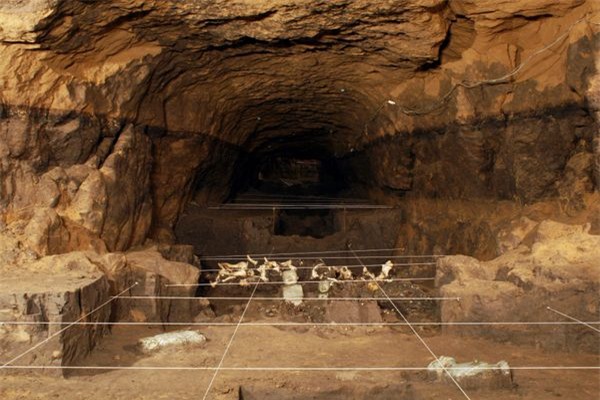
Many ancient artifacts were found in this tunnel.
The river of mercury under the pyramid: The mystery is hard to explain
What surprised archaeologists most, however, was the presence of large amounts of liquid mercury in a room at the end of the tunnel. Mercury is a highly toxic substance and has the potential to cause significant harm to the human body upon prolonged exposure. Therefore, the research team needed to use a protective mask to avoid mercury poisoning.
According to Sergio Gómez, the river of mercury hidden under the pyramid of the Serpent temple seems to be a symbol of a lake or river in the underworld. In addition, a large number of artifacts were found near the entrance to the three rooms, suggesting that this may be the mausoleum of the city’s elite.
Therefore, the archaeologist believes it is a sign that his research team is getting closer to uncovering the first royal tomb in Teotihuacan, potentially even unearthing the city’s mysteries. mighty ancient.
Sharing with The Guardian, anthropology professor Rosemary Joyce at the University of California, Berkeley, said that the inhabitants of Teotihuacan were able to create liquid mercury from mercury ores, known as cinnabar.
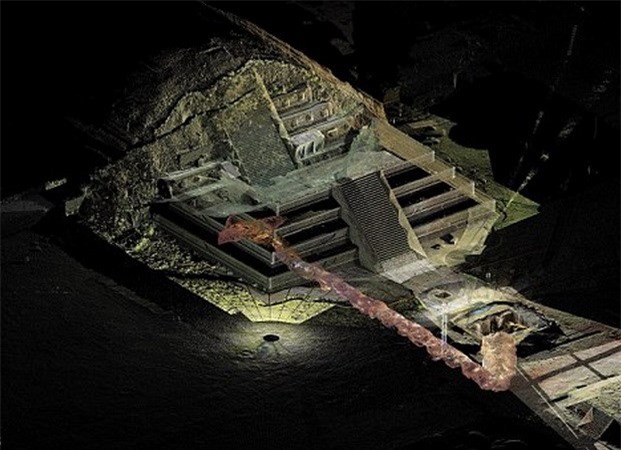
A large amount of mercury flows through a secret tunnel, just below the ancient pyramid. Photo: Reuters
At that time, cinnabar could be used to decorate jade objects and many other uses. In fact, traces of mercury have been found at three different locations, two in the Maya civilization and one in the Olmec civilization, around Central America. However, nowhere has such a large quantity of mercury been found as below the pyramid of Quetzalcoatl.
According to the researchers, mercury was a very rare thing in ancient Mexico. Furthermore, cinnabar, the ore that provides mercury, is difficult to mine and scarce. Therefore, detecting large amounts of mercury in Teotihuacan would be very valuable. Mercury is highly reflective, so many believe that the river of mercury lurking beneath the pyramid may have been part of an important ritual with supernatural significance.
Many years of research and excavation, but until now, there is still no exact solution to the mystery surrounding the pyramid of Quetzalcoatl, the temple of the mysterious Snake god at Teotihuacan. However, researchers are still searching for valuable clues about this archaeological site and promise to be able to partly solve the mystery of the pyramid population at Teatihuacan as well as the lost civilization. at this place.
at Blogtuan.info – Source: danviet.vn – Read the original article here
